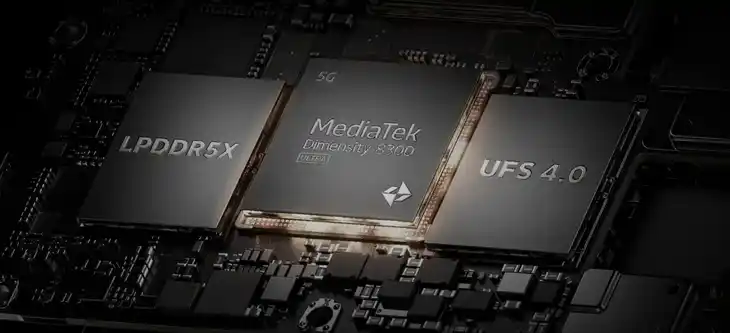MediaTek Dimensity 8300 Ultra

MediaTek Dimensity 8300 Ultra: What This Chip Is
Dimensity 8300 Ultra is a branded variation of Dimensity 8300, created in collaboration with manufacturers (most often Xiaomi/POCO) via the Dimensity 5G Open Resource Architecture. The base silicon is the same, but partners get access to deep tuning of the camera, AI, and display pipelines, as well as fine-grained adjustment of clocks and power limits. In practice, Ultra is not a separate die—it's a device-specific, tuned version.

Key Platform Specifications
-
Process/CPU: TSMC 4 nm; 8-core Armv9 — 4× Cortex-A715 and 4× Cortex-A510. In Ultra configurations on some models there’s a peak up to 3.35 GHz on one A715 core (typical: 1×3.35 GHz + 3×3.2 GHz + 4×2.2 GHz).
-
GPU: Arm Mali-G615 MC6.
-
Memory & Storage: LPDDR5X up to 8533 MT/s; UFS 4.0 with Multi-Circular Queue (MCQ) to speed up random access and app installs.
-
AI/ML: APU/NPU 780 for on-device acceleration, including generative scenarios (local models, enhanced camera effects and scene understanding).
-
Camera & Video: Imagiq 980 ISP, sensors up to 320 MP; 4K60 HDR recording; advanced noise-reduction and HDR chains; hardware AV1 decode.
-
Displays: Up to 180 Hz for FHD+ or 120 Hz for WQHD+.
-
Connectivity: 5G with peak download up to 5.17 Gbps, Wi-Fi 6E, Bluetooth 5.4.
Ultra vs the Standard 8300 — The Idea
-
Same base SoC, but with expanded access via DORA to tune camera algorithms (AE/AF/AWB/NR/HDR), display chains (smoothing engines/PWM management/color), AI pipelines, and networking stacks.
-
OEMs can carefully raise clocks and/or power limits where the device’s thermal design allows. Final figures depend on the specific smartphone model.
Where Dimensity 8300 Ultra Is Used
-
POCO X6 Pro
-
Xiaomi 14T
-
Redmi K70E
What This Brings to Devices
-
Fast on-device AI: photo/video processing and offline features (including generative effects) run locally with low latency and without sending data to the cloud.
-
Strong camera in the upper-mid segment: 4K60 HDR, advanced noise reduction and HDR pipelines, plus fine OEM tuning for specific sensors.
-
Stable performance: modern LPDDR5X and UFS 4.0 help sustain FPS in games and speed up app launches.
-
Power efficiency: the 4 nm process and flexible power limits enable longer sustained peaks without throttling (within a device’s thermal budget).
Basic
GPU Specifications
Connectivity
Memory Specifications
Miscellaneous
Benchmarks
Phones with Dimensity 8300 Ultra



Comparison of Devices with Dimensity 8300 Ultra
Compared to Other SoC
Share in social media
Or Link To Us
<a href="https://cputronic.com/en/soc/mediatek-dimensity-8300-ultra" target="_blank">MediaTek Dimensity 8300 Ultra</a>


